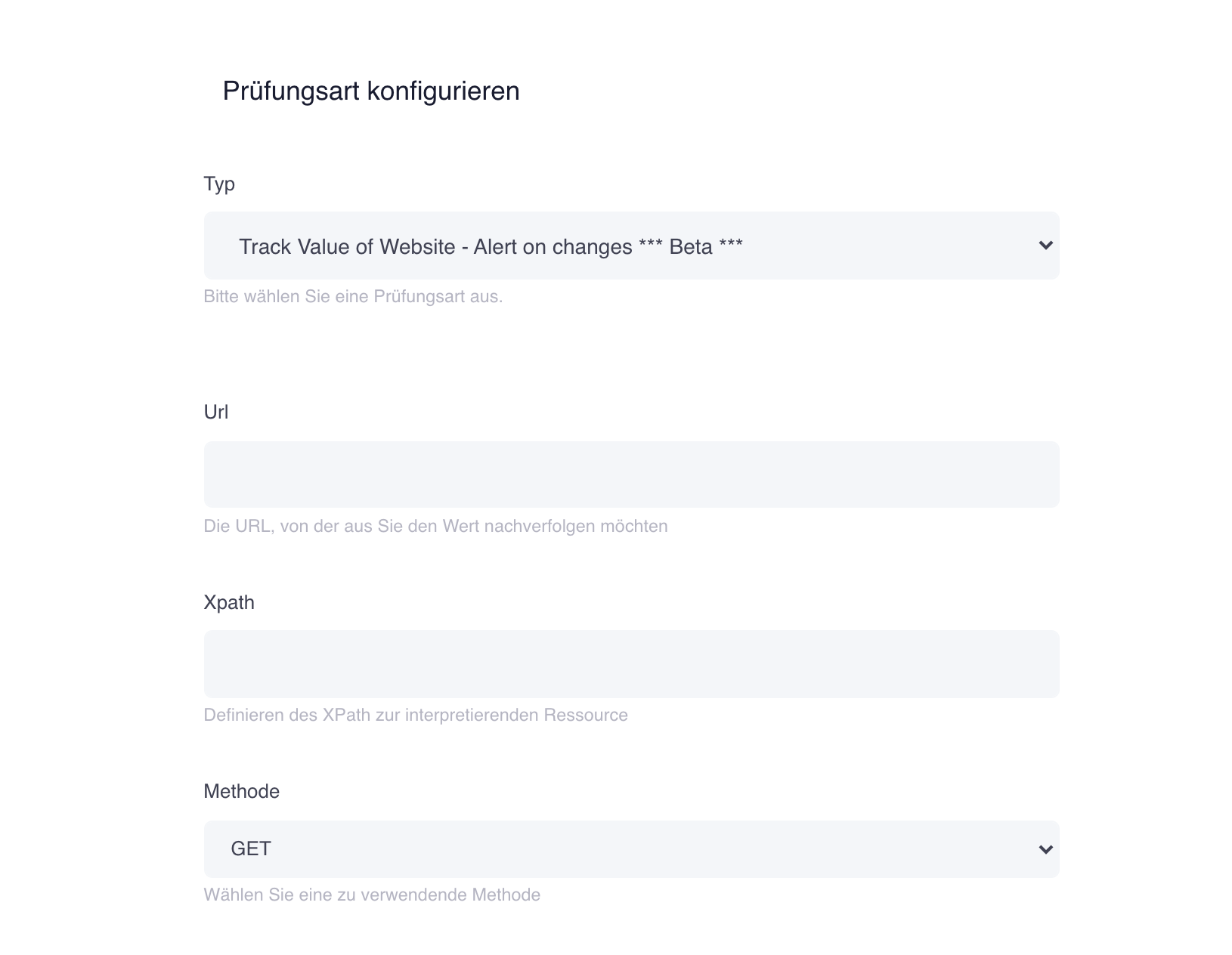 Would you like to monitor a certain value on a website? You can now with the Livewatch Value Tracker. Define a url on which you want to monitor a certain value. You then have to define the HTML XPath for the corresponding element.
Would you like to monitor a certain value on a website? You can now with the Livewatch Value Tracker. Define a url on which you want to monitor a certain value. You then have to define the HTML XPath for the corresponding element.
In addition, you can restrict the value found with a regular expression so that a number can be found if the check is successful. Depending on the language, we interpret the value found into a valid number, which we then monitor. You also have the option of defining threshold values for the alarm.
You can set a minimum and maximum value at which you will be informed if the value falls below or exceeds the limit. It is thus possible, for example, to monitor the prices of a competing provider. We would be happy to help you configure the check if you need any help. Just contact us.
Here we answer questions about server monitoring from Livewatch. If you have a question that we have not yet answered here, please contact us.
The pay per use model, also known as usage-based billing, is a billing method in which customers pay for the actual use of a product or service, rather than paying a fixed fee regardless of actual usage. This model allows for a variable cost structure that is directly related to actual consumption or usage. Here are some key features of the “pay per use” model:
Variable costs: The costs borne by the customer vary according to the amount or intensity of use of the product or service. This is in contrast to fixed monthly or annual fees.
Measurable Usage Units: Billing is based on measurable units associated with the use of the product or service. This may vary depending on the context, e.g. B. computing power in the cloud, the amount of data used by Internet service providers or the number of printed pages delivered by a printing service.
Customer Flexibility: Customers have the flexibility to tailor their usage to their needs and only pay for what they actually use. This is particularly beneficial in situations where usage fluctuates or is difficult to predict.
Transparent Cost Structure: The "pay per use" model often provides a transparent cost structure because customers can understand exactly how their costs are calculated. This can make budgeting and planning easier.
Common in the cloud and SaaS industries: "Pay per use" is widely used in the cloud computing industry, Software-as-a-Service (SaaS) offerings and other services where usage can be measured directly.
Examples of the “pay per use” model can be found in various industries, from telecommunications to cloud services to services such as video streaming and electricity distribution. It offers advantages for both providers and customers by distributing costs more fairly and enabling flexible use.